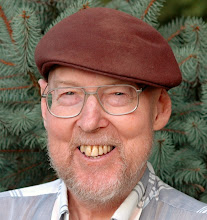When Plow Creek Fellowship was founded in 1971 as a communal church the USA was riding the waves of the countercultural revolution of the 60’s. Plow Creek rode one of the waves of the counterculture--the Jesus movement.
Sarah and I arrived at Plow Creek in 1977 and three years later Sarah was one of five pregnant women at Plow Creek. In fact, almost 20% of the adults in the community were pregnant that year.
Every organization is part of an ecosystem and the ecosystem profoundly affects the organization. For instance, every organization is part of the physical environment. While an extreme example, when Hurricane Katrina hit the Gulf coast of Mississippi and Lousians in 2005, it showed how every organization in in its path had a complex relationship with the physical environment.
Social, political, legal, economic, and religious systems are all part of the ecosystems that organizations operate in.
The principle that Evergreen Leader’s ecosystem path is founded on states that organizations that build healthy, shifting relationships with their physical, social, political, legal, economic, and religious systems thrive.
In its early years Plow Creek Fellowship had dynamic relationship with its environment. The founders were all a generation older than the youth who arrived in the 1970’s. When I lip-synced to Larry Norman’s “Why Should the Devil Have All the Good Music?” at a Plow Creek talent show complete with strobe lights set up be my friend Kent Rathgen, it was a signal that Plow Creek’s environment had shifted.
The teenage children of founders were shocked and delighted. This was definitely not the music of their parents. But their parents were willing to build healthy, shifting relationships with the 20-somethings who arrived at Plow Creek having been deeply influenced by the counterculture.
What, you may well be wondering, has this to do with tension in the community in 2006 that signaled a need for change in the decision-making structure?
A 1995 decision by Plow Creek Fellowship led to a significant change in the social ecosystem that PCF operates in today.
From 1971 to 1995 the only way to be a member at Plow Creek was to be communal, to be part of the common treasury and communal decision-making. In 1995 the group decided to make it possible for people to join Plow Creek Mennonite Church without joining the communal group, Plow Creek Fellowship.
Starting in 1997 younger families began to join the church without joining the fellowship. By 2005 half were members of the church without being members of the fellowship and half were members of both. Most of the new church members lived on the farm, renting from the fellowship.
As you can see the ecosystem the fellowship operates in has shifted significantly.
The demographics of the fellowship have also shifted. By 2005 the youngest member was in her late 40’s and the oldest in her early 80’s.
In the early 2000s the fellowship began talking about attracting the next generation. In 2005 the fellowship affirmed a plan to launch a three-month to one-year internship in communal living. In a break from past tradition the group affirmed interns participating in members meeting through out the internship. Previously people interested in joining PCF attended members meeting only in the final stage of becoming members--we called these folks sharing neighbors--and they they simply observed the decision-making. Only member actually affirmed decisions as part of the members meeting.
In the summer of 2006 interns began attending meetings for the first time. At the same time several of the younger families who were part of the church expresses an interest in becoming sharing neighbors.
The ecosystem had shifted. Now we had folks who had lived on the farm for one to five years wanting to explore becoming part of the community.
When the ecosystem of an organization shifts sufficiently it creates anxiety within the organization, making it difficult for the organization to build healthy, shifting relationships with a changing environment.
Difficult but not impossible.
An organization with a strong sense of its own treasure can shift within its ecosystem without feeling that the treasure of the organization is going to given away in the change.
Next time I’ll explore how Evergreen Leaders treasure path made it possible for me to propose a change in our decision-making pattern that addressed both the shift in the fellowship’s ecosystem and the need for a change to create a smart and friendly decision-making system.
Saturday, September 02, 2006
Subscribe to:
Post Comments (Atom)


No comments:
Post a Comment